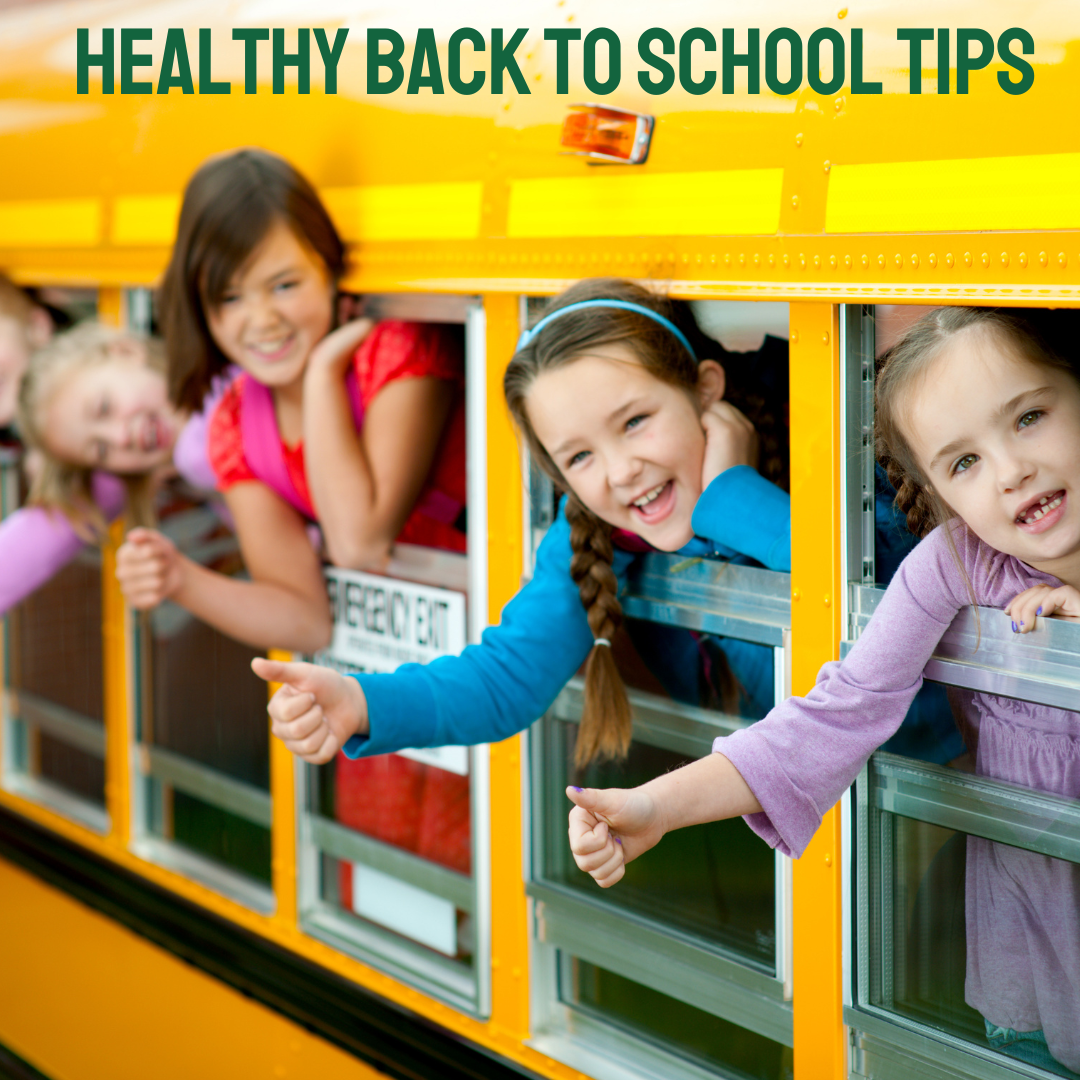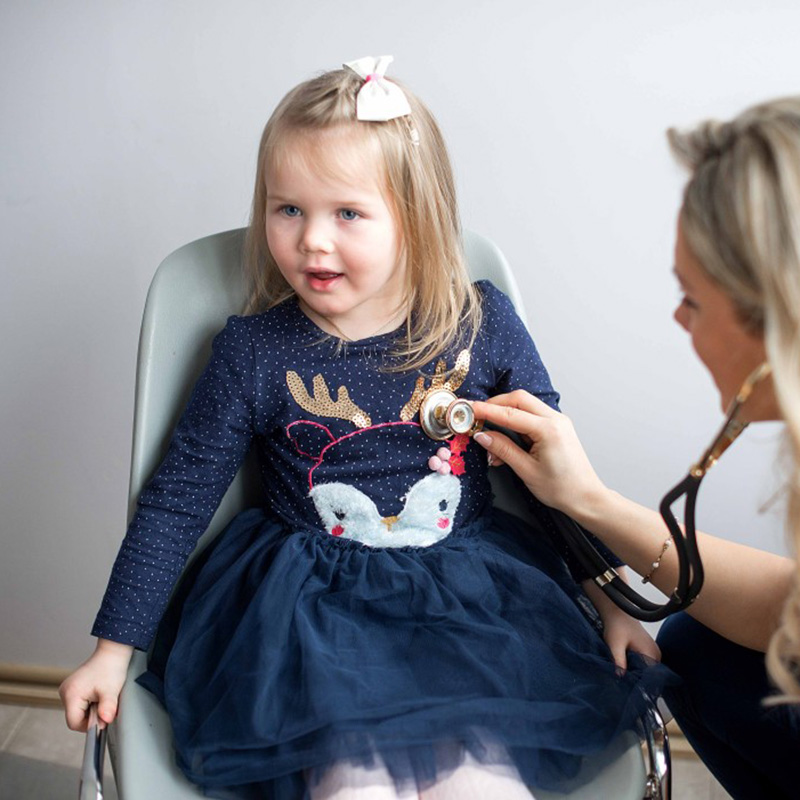
Have you heard the old saying, “Monkey see, monkey do”? Children learn many behaviors by imitating what they see other kids doing. That includes their eating and exercise habits. Unfortunately, children often observe other kids eating junk food and sitting glued to their digital devices instead of moving their bodies and eating healthy foods.
As a parent, it’s important that you’re aware of the different ways peers can influence your kids’ eating and physical activity. That enables you to help them navigate tricky social forces and keep them on a healthy path.
Children’s Peers and Eating Habits
Kids are influenced by what and how much they see others near their age eat. That includes their siblings, friends, and other peers.
Researchers have found that the eating habits of 3-to-5-year-olds at childcare centers become more similar over time. For some kids, this could be an improvement, but for others, it isn’t. These young children tend to eat too much sugar, unhealthy fats, and sodium but don’t eat enough fruits and vegetables.
Peer influence can also come from videos. Depending on the video, this influence could be positive or negative.
In one study, preschoolers were shown a video in which similar-age children were having fun eating bell peppers. Then the preschoolers were offered peppers a few times during the week. They didn’t immediately warm up to them, but they ate more peppers a week later, compared to children who didn’t watch the video.
So, the peer video did help. Just keep in mind that children often need a little time to get familiar with a new food.
Kids also pick up cues from their peers about what serving sizes are acceptable. For example, when girls ages 8 to 12 were offered a bowl of bite-size cookies, researchers found that they ate more cookies when the child they watched in a video consumed more cookies. The opposite was also true: When the child in the video ate fewer cookies, the girls in the study also ate fewer cookies.
Children’s Peers and Sugary Drinks
Children influence each other to drink sugary beverages. Over 60% of American children drink sugar-sweetened beverages daily, so kids routinely see others consuming this “liquid candy.” This not only includes soda, but also sports drinks, lemonade, and juice drinks.
When 21 parents from a lower-income metropolitan area were interviewed, they described several situations in which their kids were influenced to drink sugary beverages by their peers. These situations included:
- Seeing friends drink sodas and feeling peer pressure to do the same
- Being introduced to sweet tea at a fast-food restaurant with friends
- Feeling pressure to offer sodas when friends come over to visit
- Having older siblings who buy sweet drinks for younger siblings
Though you can’t control what your kids drink outside your home, you can be a good role model by not drinking sugary beverages yourself. Moreover, if your kids aren’t accustomed to drinking sugary beverages at home or at restaurants when you’re with them, this could influence them to make better choices when they’re with their peers.
Social Media Influences Food Choices
Children commonly pick up the behaviors of kids they see on social media. Kid influencers on social media predominantly promote junk foods and beverages that are high in sugar, unhealthy fats, and salt.
In one study, researchers identified the five most-watched kid influencers (ages 3 to 14) on YouTube, a video-sharing platform. Then they scanned 418 of the influencers’ most-watched videos and found that 179 of the videos featured food and/or drinks. More than 90% of the foods promoted were unhealthy branded items, such as fast food and processed packaged foods.
How do these junk food brands end up in videos on social media?
In many cases, companies pay for product placements in social media videos. Or, they sponsor the posts so they can run advertisements with the videos.
What’s especially tricky is that paid food placements are marketing disguised as entertainment. Moreover, parents and kids tend to view these “everyday influencers” as more trustworthy than traditional celebrities.
The Federal Trade Commission has issued guidelines saying that social media influencers should disclose paid product endorsements. Your children may not understand what these disclosures mean if they notice them at all. But they do notice the junk food, and research suggests this influences what they eat.
Researchers tested this by showing 176 kids (ages 9 to 11) Instagram profiles of popular influencers holding unhealthy snacks like cookies, healthy snacks like fruit, or non-food products like sneakers. Then they offered the kids a variety of healthy and unhealthy snacks during a short break.
Kids who had looked at profiles of influencers holding unhealthy snacks consumed 91 more calories from unhealthy snacks than children who saw influencers holding non-food products. In contrast, looking at influencers holding healthy snacks didn’t significantly affect children’s snacking compared to looking at influencers holding non-food products.
Children’s Peers and Physical Activity Habits
Children are apt to be more physically active when they’re hanging out with one or more of their peers than when they’re alone. This is partly because sports and active play often involve more than one person.
That said, some kids who are overweight or less skilled at sports may shy away from physical activity due to fear of being scrutinized or teased by their peers. This may be especially true of girls, as they’re often more self-conscious of their bodies.
Not surprisingly, criticism from peers only worsens kids’ inactivity. Children who are less physically active are more likely to hang out with other kids who aren’t very physically active. This can promote a vicious cycle of inactivity.
Researchers found that when kids felt excluded from physical activity by their peers, they attained 22% fewer steps on a step counter. In turn, they spent 27% more time doing sedentary activities.
Parents versus Children’s Peers
Though kids influence each other’s eating and physical activity habits, parents have the strongest influence on their children’s health behaviors. This is especially true when your children are young, as you are the main gatekeeper of their food choices and activities.
When children enter their “tween” years, their friends start to influence their behavior more. As you may already know, it’s common for kids to eat certain foods in order to fit in with their peers.
Even so, research suggests parents influence their adolescent children’s eating habits the most. That’s good news for you!
More important than what you say about a healthy lifestyle is what you do. That includes how you eat and the example of physical activity that you set for your kids.
Here are some other strategies you can use to help combat unhealthy peer influences:
- Teach digital literacy. Children need to know that kid social media influencers create content based on their own (or their parents’) agendas, which can include being paid to promote junk food. Teach kids how to spot signs of paid promotions and to think critically about the content.
- Be aware. Know what social media your children are viewing. For example, have them watch it in plain sight on a computer screen near you, rather than on a small hand-held digital device that you can’t easily see.
- Use media strategically. Seek out positive peer influence from many sources, including books and videos, to encourage kids to eat fruits and vegetables.
- Celebrate with healthy foods. Children’s parties are often seen as an occasion to indulge in sweet treats. But these “special occasions” often happen every week. Include fruits and vegetables at celebrations. Make them fun, such as by putting them on wooden skewers (with blunt ends) or cutting them into interesting shapes and pairing them with a healthy homemade dip.
- Support a range of physical activities. Not all kids will enjoy team sports like soccer and baseball. They might be more interested in other forms of exercise such as swimming, running, dancing, or martial arts. Also engage in family exercise, such as going on walks or hikes together.
Remember, kids often carry their eating and exercise habits into adulthood. So, putting forth some effort now to promote positive social influences on eating and physical activity could have big payoffs for your children’s health in the long run.










